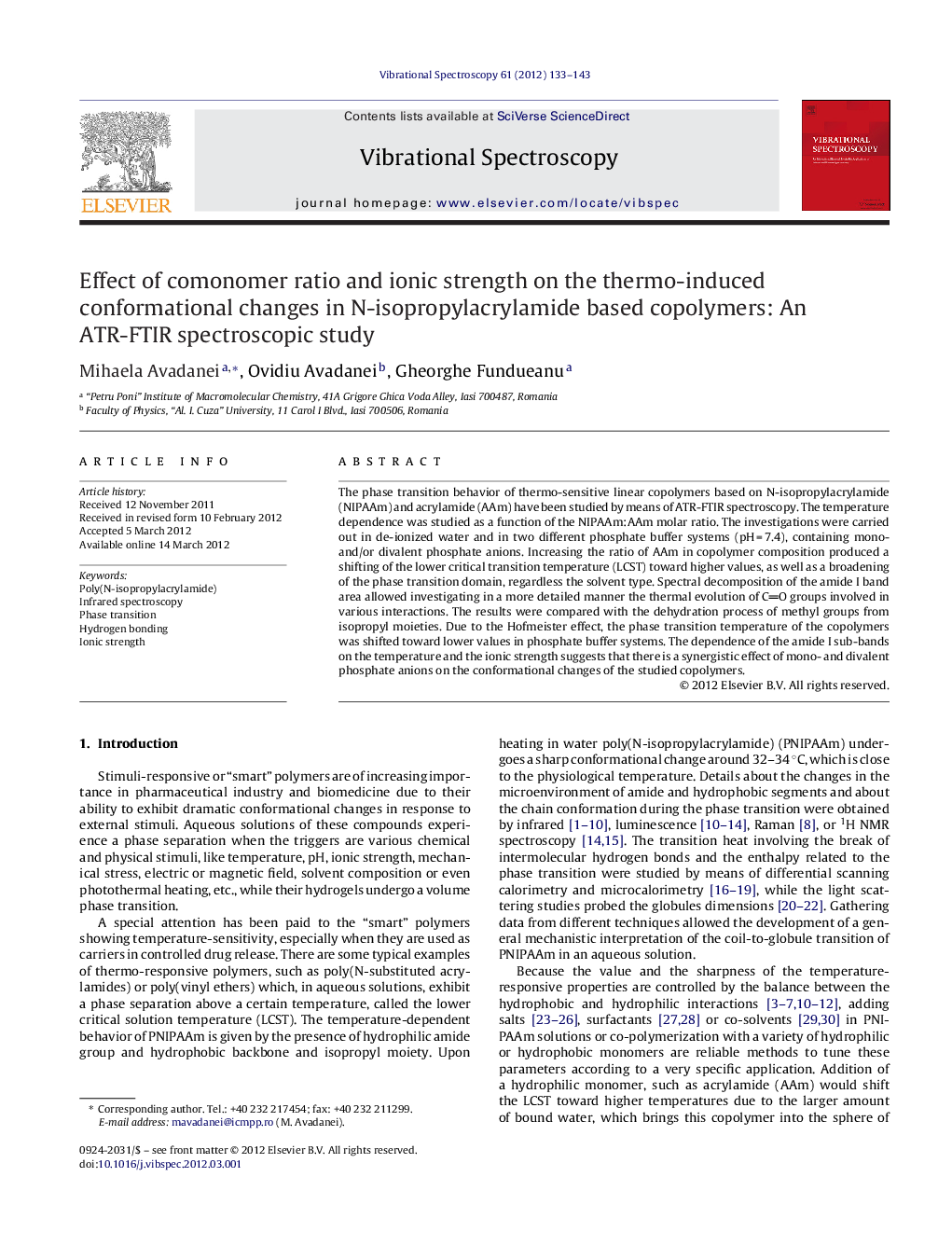| Article ID | Journal | Published Year | Pages | File Type |
|---|---|---|---|---|
| 1250521 | Vibrational Spectroscopy | 2012 | 11 Pages |
The phase transition behavior of thermo-sensitive linear copolymers based on N-isopropylacrylamide (NIPAAm) and acrylamide (AAm) have been studied by means of ATR-FTIR spectroscopy. The temperature dependence was studied as a function of the NIPAAm:AAm molar ratio. The investigations were carried out in de-ionized water and in two different phosphate buffer systems (pH = 7.4), containing mono- and/or divalent phosphate anions. Increasing the ratio of AAm in copolymer composition produced a shifting of the lower critical transition temperature (LCST) toward higher values, as well as a broadening of the phase transition domain, regardless the solvent type. Spectral decomposition of the amide I band area allowed investigating in a more detailed manner the thermal evolution of CO groups involved in various interactions. The results were compared with the dehydration process of methyl groups from isopropyl moieties. Due to the Hofmeister effect, the phase transition temperature of the copolymers was shifted toward lower values in phosphate buffer systems. The dependence of the amide I sub-bands on the temperature and the ionic strength suggests that there is a synergistic effect of mono- and divalent phosphate anions on the conformational changes of the studied copolymers.
